A tankless water heater, or on-demand water heater, is a system that doesn’t need to store boiling water. Instead, it heats water “on-demand,” hence the name. It’s a less bulky and much more energy-effective option than usual storage water heaters.
There are positive and negative factors to consider before deciding on this option.
In this guide, you’ll explore in-depth the main pros and cons of this system.
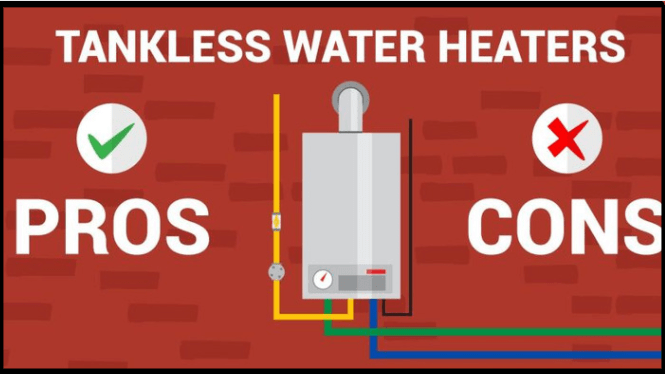
Photo credit: bestwatersoftenerblog.com
Tankless Water Heaters Pros and Cons
In this section, you can compare all the determinant factors about this system. There are a couple of issues and variables to remember, like how long you’re planning to live where you are. Is an on-demand system the best choice for you?
Pros | Cons |
|---|---|
Space savings | High upfront cost |
Longer lifespan | Relies on electricity |
Lower safety risks | Limited water output |
Long-term savings | Inconsistent temperature (case to case) |
Higher energy efficiency | Requires special venting (installation hassles) |
Environmentally-friendly | |
Immediate hot water output |
Pros of Tankless Water Heaters
On-demand heaters have some decisive advantages over other options. They need less space and are very energy-effective, reduce your water consumption and carbon footprint. Read about the outstanding features of on-demand heaters below.
Higher Energy Efficiency
Tankless water heaters, also called on-demand water heaters, are more energy-efficient than tanks. First off, they don’t need a 24/7 energy supply because this system only works when it’s necessary. The Department of Energy confirms that on-demand heating systems can be up to 50% more efficient than traditional water heaters.
Tankless heaters warm up the water almost instantly through gas burners and electric coils. The operation itself consumes more energy than keeping water warm. Yet, the system doesn’t have to be working around the clock.
Translating this efficiency in numbers can save between 24% and 34% compared with storage systems. If you decide to install a tankless system for each hot water outlet, your saving margin can go up to 50%. Because of tankless heaters, about 86 gallons also reduced your daily water consumption.
Since there’s no need to store it, your consumption only starts when you turn on the boiling water. So, your heater must deal with much less water, thus saving more energy and water.
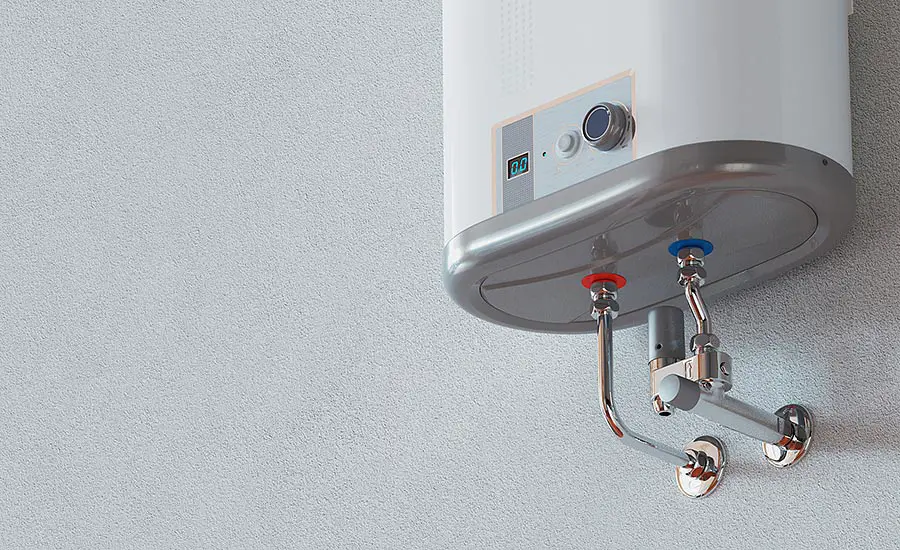


Photo credit: pmmag.com
Long-Term Savings
Although its upfront cost can be higher than traditional models, tankless systems are more cost-effective in the long run. The Department of Energy estimates a savings of around $100 yearly. It’s a big difference for an appliance that corresponds to the second most significant part of your energy bill.
They need less maintenance, last much longer, and consume much less energy. A tankless system pays itself back in energy bill savings over the years. Electric tankless systems have a shorter payback period than conventional ones. Anyway, this period can range between 10 and 25 years, regardless of the power source.
Storage systems don’t last so much, and any problem with them (like leaking or, worse, bursting) can cause unpredictable losses in your property, apart from risking the safety of anyone around it.
Over time, you also save in water consumption since you only use it on-demand, as this appliance’s name suggests. It means that you save on your energy bill, your water bill, occasional maintenance, and replacement.
Between electric and tankless gas heaters, electric ones are more energy-efficient. It happens because gas systems require a pilot flame to be constantly on, while electric heaters only work when you turn on a boiling water outlet.
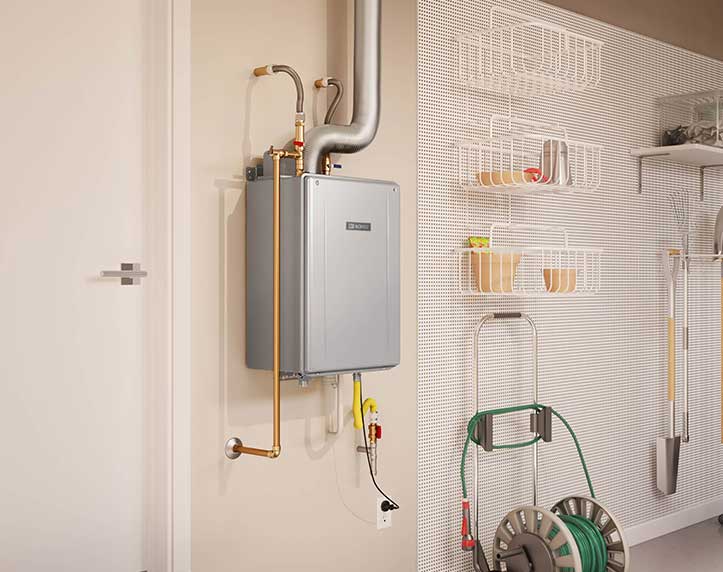


Photo credit: betterhousekeeper.com
Longer Lifespan
A tankless system can last between 20 and 25 (sometimes even more) years with proper maintenance. It’s almost double a storage heater’s lifespan. This system is also less susceptible to corrosion because it’s constantly exposed to water.
For this reason, it has longer-lasting parts. Anyway, it requires regular flushing to keep working at its best. If you live in a hard water region, consider installing a water softener. Here, also flush your system at shorter intervals.
Because it’s not on all the time, like a storage water heater must be, the tankless system’s parts are much more durable. It needs regular flushing, like any traditional tank. Yet, its design reduces sediment build-up, preserving interests, and pipes for longer.
Because it doesn’t store water, it’s not so exposed to water corrosion over time, like storage heaters. Yet, if you install it far away from faucets and showers, it will have to work harder. Here, it can reduce your tankless heater’s lifespan by approximately two years.
Space Savings
It’s no surprise that this system is less bulky than the traditional one. Typically, storage heaters require the installation of a cabinet. In contrast, we can mount tankless heaters inside of a wall, anywhere around the house.
Such space-saving can be determinant in small places. Likewise, point-of-use appliances require less space than expansion tanks. It’s an advantage in installation since it’s easier to place it close to the boiling water outlets it will supply, improving its efficiency and durability.
Immediate Hot Water Output
Tankless heaters can warm up water to the desired temperature in 15 seconds. But, this boiling water won’t get immediately to your faucet. The length of your wait will depend on the distance between your heater and a fixture. If you opt for installing a tankless system for a boiling water outlet in your house, your waiting time is even shorter. Anyway, the heating process is swift. Consider installing a recirculation pump if the distance between the heater and your fixtures is longer than 50ft. This kind of pump redirects cold water back to the heating system, which reduces waiting time.



Photo credit: ways2gogreenblog.com
You can make your access to boiling water even quicker by installing point-of-use water heaters. This kind of heater works on specific points of your home; it could be in the bathroom or the kitchen, for instance. They can also be tank or tankless. But the tankless system wins here again to hold the same advantages as its larger version.
Lower Safety Risks
Tankless systems pose little to no threat to your safety. This system is much safer than the traditional one. Traditional tanks can accumulate pressure and explode if the pressure valve malfunctions. It’s a very rare accident, to be fair, but it’s possible to happen. Tankless heaters don’t offer this kind of danger.
Here, water is heated while it passes through your pipeline, and there’s no build-up. This system is much less susceptible to leaks than traditional ones, which damage your home in countless ways.
Tankless heaters are also a safer option if you have children around. Tanks can overheat on the exterior part, and there are usually flames at reach. Tankless heaters don’t ignite with pilot lights, which makes it extra safe.
Environmentally-Friendly
Tankless heating systems use much less fuel than tank ones, reducing your carbon footprint. Its energy-efficiency can be as high as 99%, meaning that there’s almost no fuel waste.
Another crucial advantage of the tankless system is that it only heats water when required. Storage systems, in contrast, need fuel almost full-time. This system also lasts two times longer than its bulky counterparts.
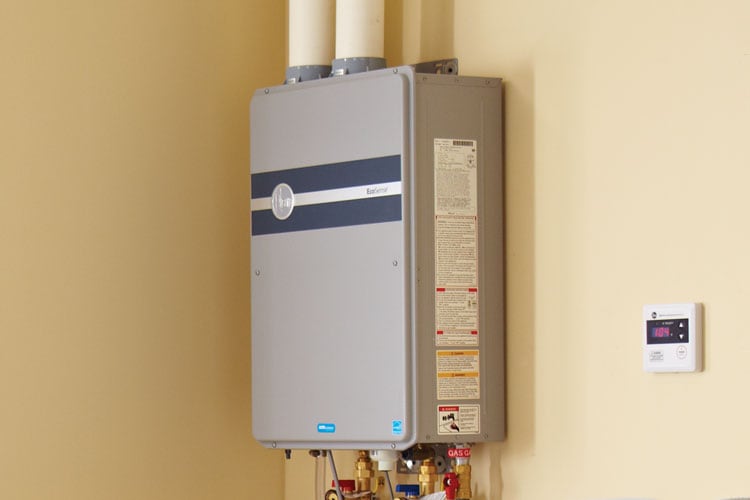


Photo credit: 1tomplumber.com
Electric tankless water heaters are the cheapest and sustainable appliance of the kind. They reduce your carbon footprint and energy bills at once. Its ability to save water (up to 86 gallons a day) contributes to make it a very sustainable appliance.
Tankless heaters don’t add any chemicals to the water, keeping it as it comes from the municipal line. If you want to flush and clean the pipes, you can use vinegar, which is harmless, and leave no traces behind.
Cons of Tankless Water Heaters
There are also some downsides to consider as well before installing this heater. Don’t rush into a decision before you’re aware of the aspects below.
High Upfront Cost
Installing a tankless heater is not always a straightforward task. An on-demand heating installation can cost three times as much as a conventional one. In some cases, installing a tankless system calls for a set of adaptations to your plumbing and electric systems. It can be a costly and arduous process.
Installation costs are also much higher than with conventional systems: up to $2,500 comparing with the average $600 of tank heaters. Appliance costs are very different: while a tank system costs around $400, a similar tankless system can cost almost $1,000. Besides, tankless systems have a much higher BTU usage than traditional systems.
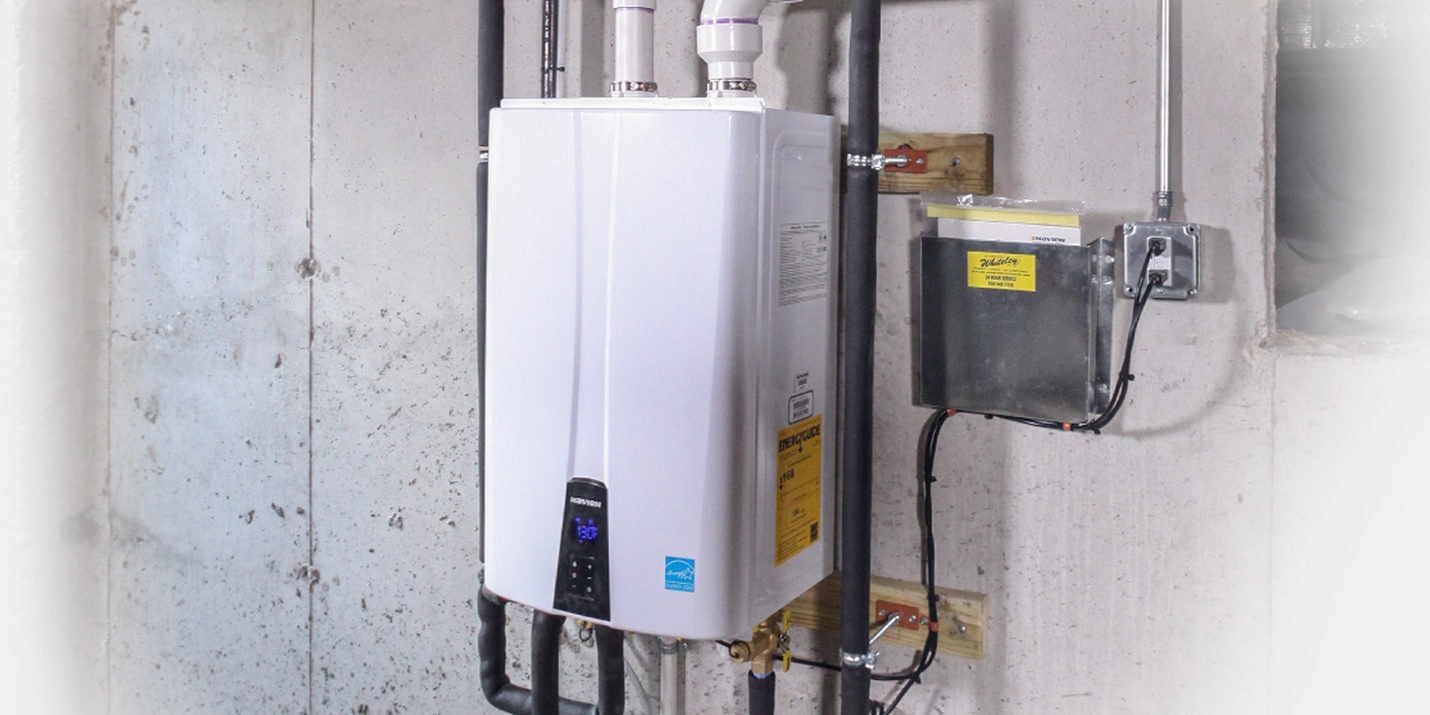


Photo credit: wattersplumbing.com
While tanks use an average of 40,000 Btu, an equal tankless system uses 160,000 Btu's. Such a high consumption can require upgrades on your gas line. In case you opt for an electric unit, you may need to upgrade to more resistant wiring.
Consider the costs of this preliminary setup work, along with appliance and installation costs. According to the Department of Energy, an on-demand water heater can save you up to $100 per year. So, you can estimate how many years your investment will pay back its cost if it ever will.
Requires Special Venting
Tankless systems have some inconvenient installation requirements about venting and plumbing. First off, the venting pipe must be stainless steel or PVC to withstand corrosive emissions. Those materials are more expensive than the regular copper, CPVC or PEX, commonly used on storage heaters.
Galvanized vents, which are acceptable for tank systems, won’t be enough here and soon rust. Besides, a vent for a tankless system should always face the outside, and above all, be exclusive.
This type of heater can’t share vents with other appliances. It also has special requirements about vent length. It should be as short as possible to ensure more efficient exhaustion of the gases. Consider moving your tankless heater closer to the exhaustion point. It’s an efficient way of saving money on stainless steel piping.
They should install vents, inclining downwards. It prevents condensate from corrosive gases from trickling back into the heater. Failing to observe this rule can abbreviate your system’s lifespan in a couple of years.
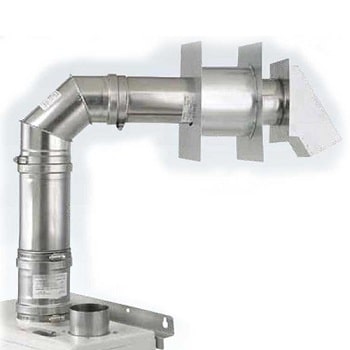


Photo credit: plumbersstock.com
Limited Water Output
Although tankless systems are efficient, they limit water output. It happens because water must pass through a gas burner or an electric coil. A typical tankless system can heat enough water for a small home, with daily usage of around 41 gallons. Yet, in homes with heavier and more frequent use, conventional systems might work better because they won’t limit your water output.
There’s another disadvantage of tankless systems with boiling water output. It doesn’t work well with many faucets at the same time. A tankless system can heat to five gallons per minute (GPM). So, if laundry and shower or faucets are on simultaneously, everyone will get cold water. The solution to this problem can be costly: either installing individual tankless systems or point-of-use systems.
If it’s impossible to avoid peaks of hot water usage in your home, you may need more on-demand heaters or point-of-use heaters. Traditional systems, by comparison, are also limited to the tank capacity. Yet, tanks can provide boiling water to multiple fixtures at the same time until the tank is empty.
Relies on Electricity
All tankless systems rely at least partially on electricity. Even gas-fueled systems have panels that need electricity to function. Not only panels and digital controls rely on electricity. The sensors that activate the heater system won’t work without it either. It’s a considerable vulnerability in regions where power outages are frequent. If it’s your case, discuss different options with your plumber.
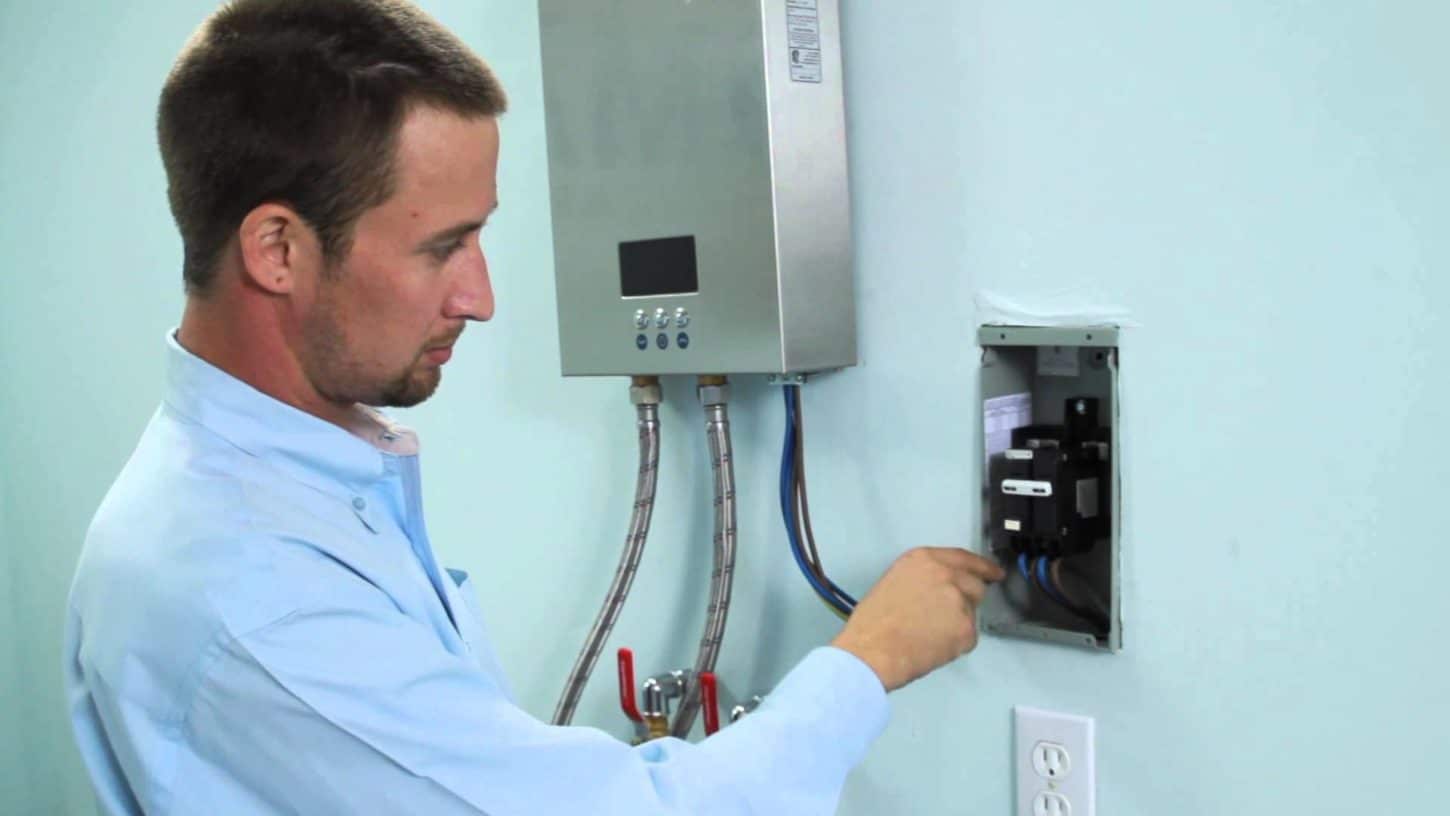


Photo credit: homeadviceguide.com
There are a few ways to avoid the significant inconvenience of running out of hot water in storms and extreme weather. You can use an alternative power source, such as a battery pack. You can also buy a parallel water heater that can operate without electricity. It’s advisable to have a battery pack around for sudden power outages.
Inconsistent Temperature
The temperature may fluctuate according to the water pressure on the pipes. If water pressure gets too low, the system shuts down. Likewise, a clogged water flow can affect the healing process. In this case, sediment build-up is one of the most common causes. Flushing is enough to remove those sediments in most cases.
Another issue, called “plumbing crossover,” can come up. It’s usually associated with the incorrect installation or a mixing valve malfunction. Some systems come equipped with filter screens, which can clog the pipe when dirty.
If multiple fixtures are being used at the same time but intermittently, it can also affect the temperature stability due to its naturally limited hot water output.
If you use a recirculation system, the fluctuating temperature can be a sign that it’s malfunctioning. Make sure there isn’t air in the design and that it’s correctly installed. Additionally, check if your pump has the appropriate capacity for the task. Underpowered pumps are common causes of temperature fluctuation.
When is a Tankless Water Heater the Right Choice?
Installing an on-demand water heater is no cheap investment. There are a few things to consider before deciding whether it’s the best choice for you.
Average Consumption in Gallons Per Minute (GPM)
Consider your average hot water flow rate. Bear in mind that a tankless heater provides unlimited hot water, but at a limited rate. Of course, you can always install two or more systems in parallel to cover your needs. But, since tankless heaters are so much more expensive, it’s better to ponder whether it’s a worthy investment.
An average on-demand system can heat up to five gallons per minute (GPM). A washing machine and a shower working together would be enough to compromise the heating’s performance. If you manage to avoid peaks like that, an on-demand heater provides hot water continuously.
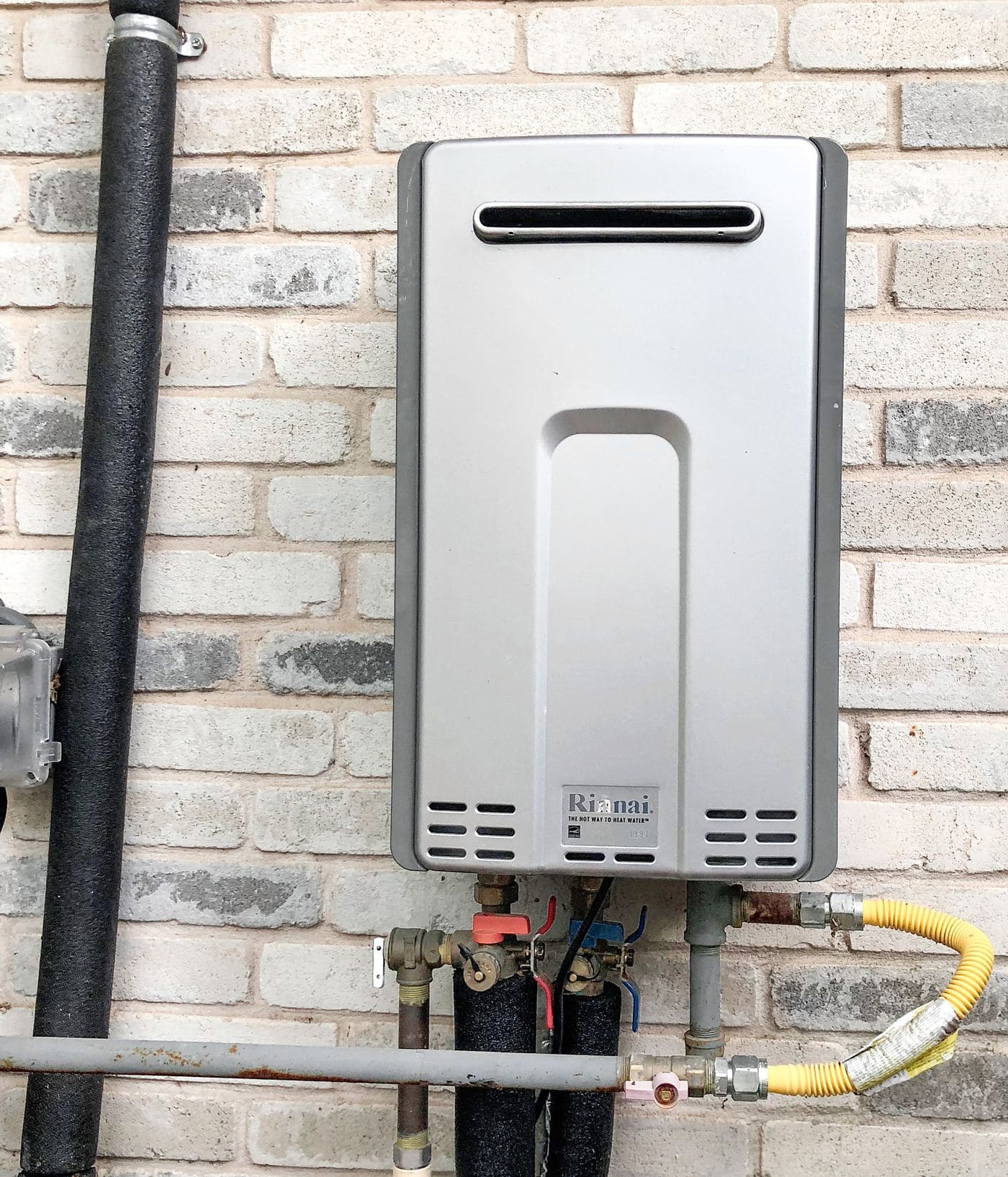


Photo credit: thisoldhouse.com
Safety Issues
Tankless heaters are safer because the outer part doesn’t overheat as tanks do. They don’t have open flames either. For those reasons, tankless heaters are a better option if you have kids around. Above all, tankless systems have no risk of bursting, like storage heaters, which could cause severe damages to your property or anyone around it at the moment.
Durability
On-demand systems can last two decades or even more. If you’re settling for a long time, this system is the best choice for you. On the contrary, if you’re planning to move in a few years, this option might be wasteful, because you won’t get to enjoy one of its best features, which is its durability.
Conclusion
After considering all the positive and negative aspects of on-demand water heaters, you can make a well-oriented choice. Consider not only the final cost but how long you’re planning to live where you are. Otherwise, it can be a waste of your money. Also, check if it’s adequate to your average consumption and consider possible adaptations on gas and electricity systems.
